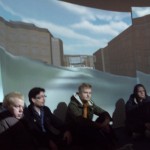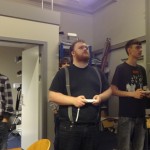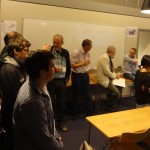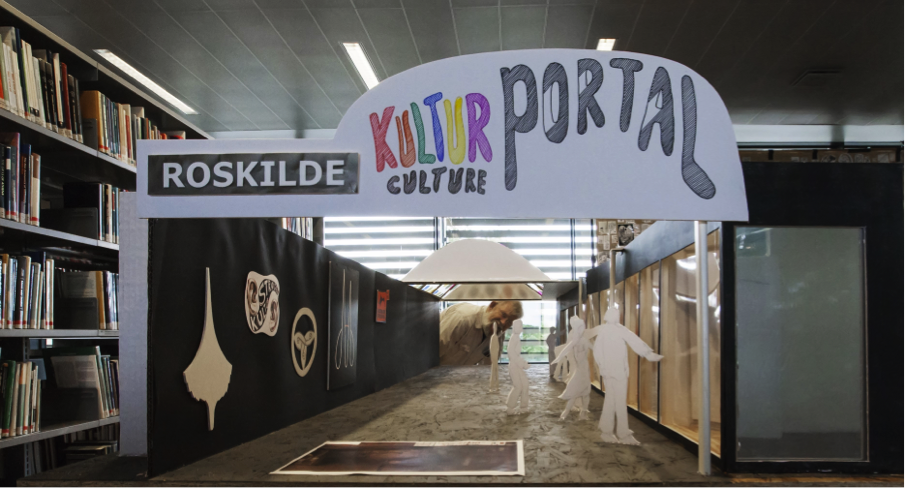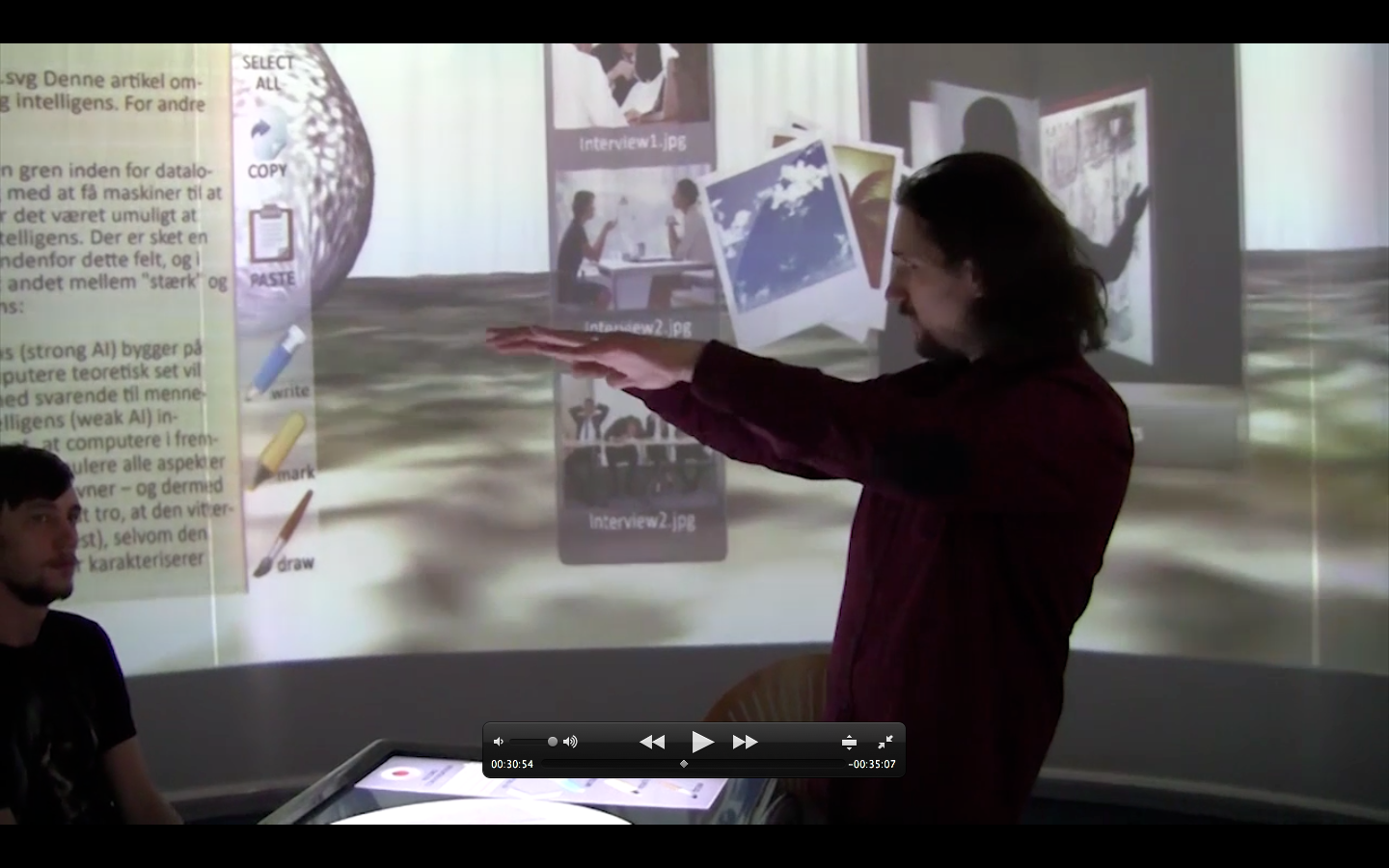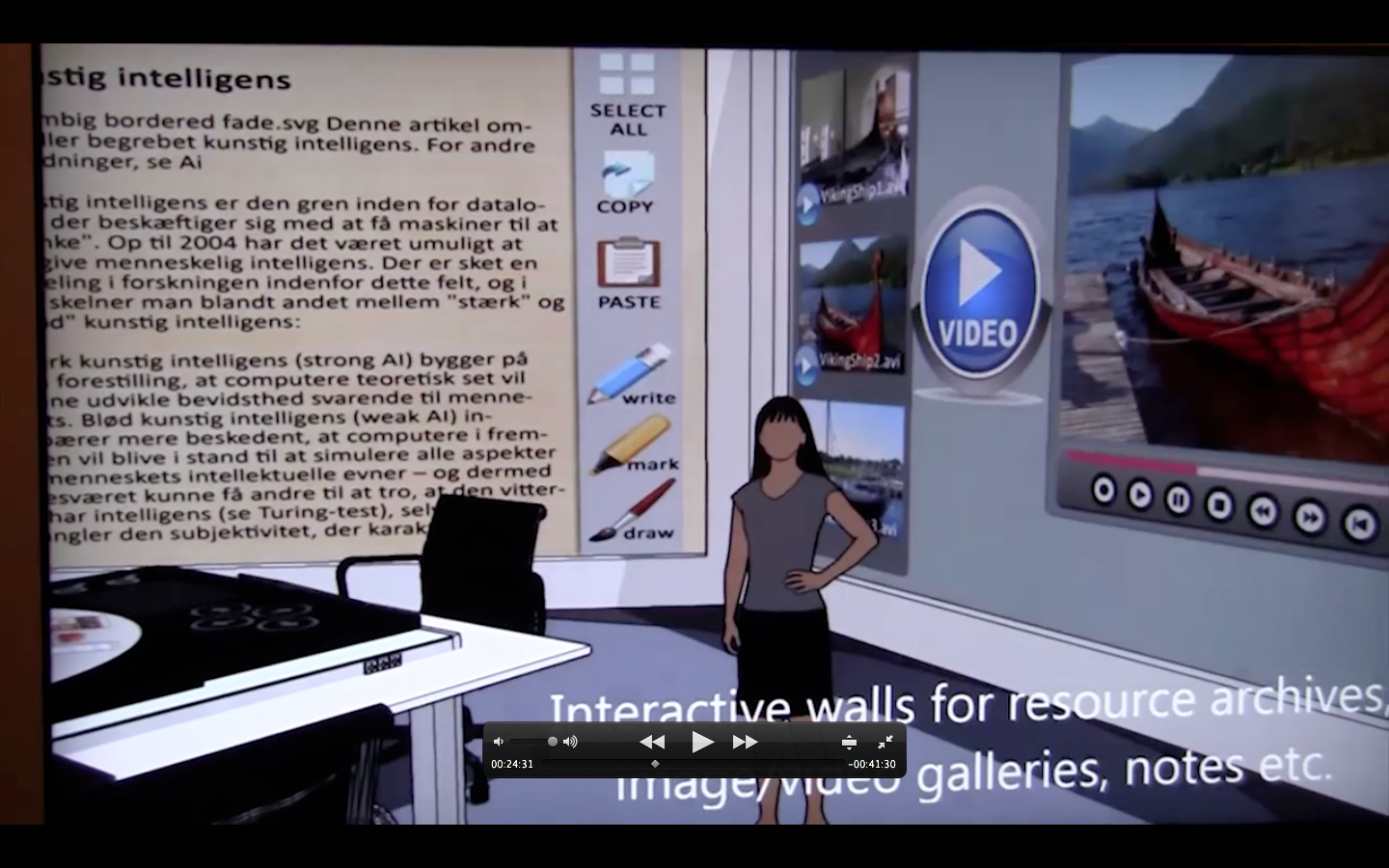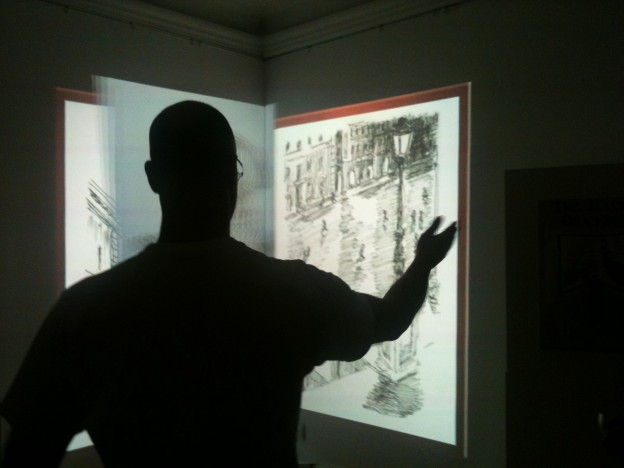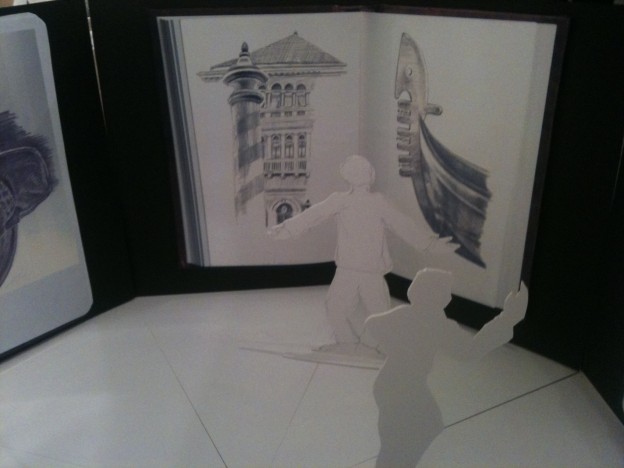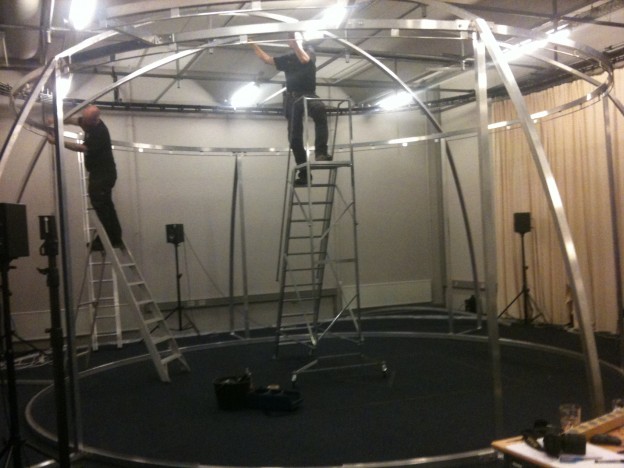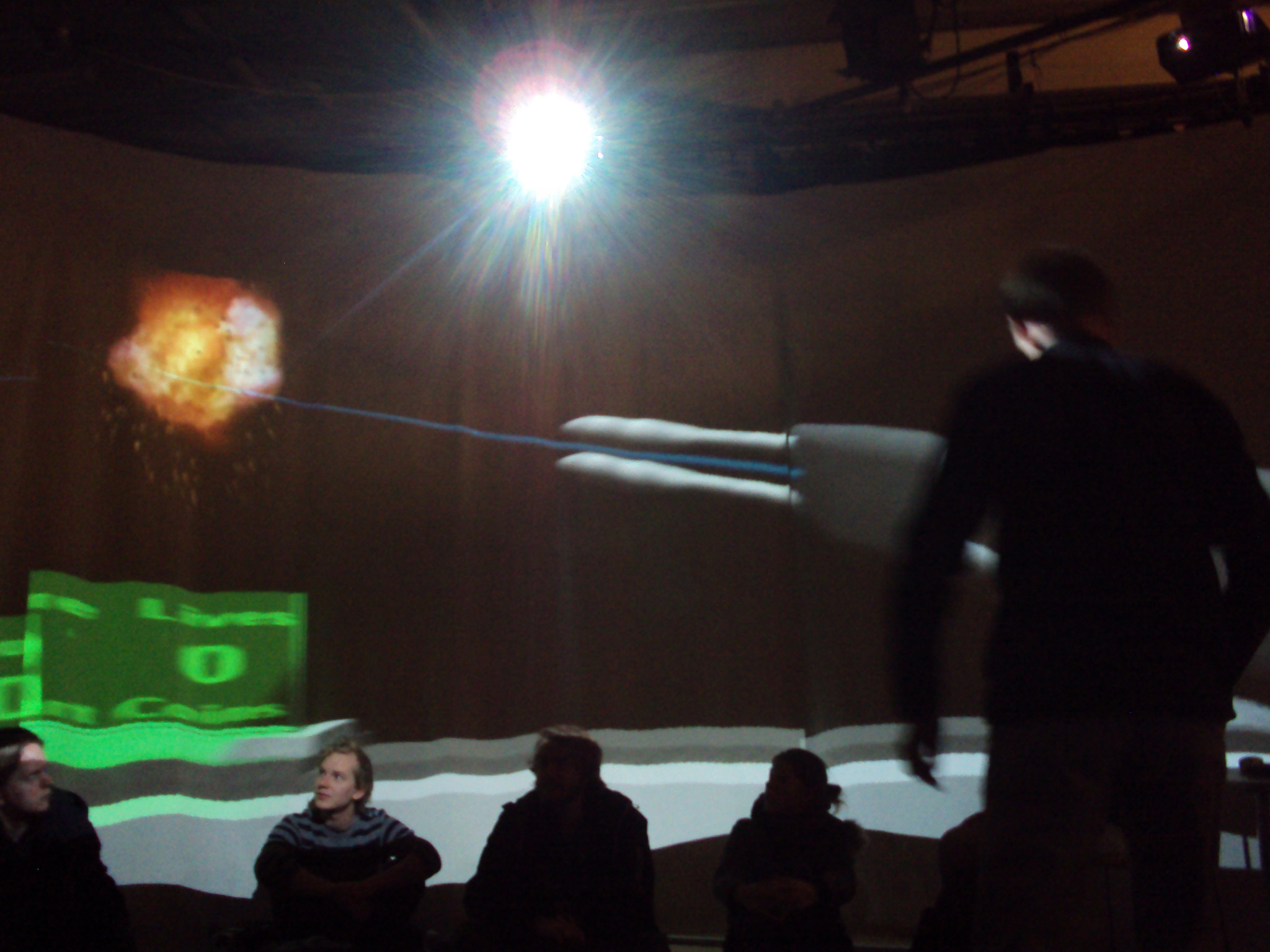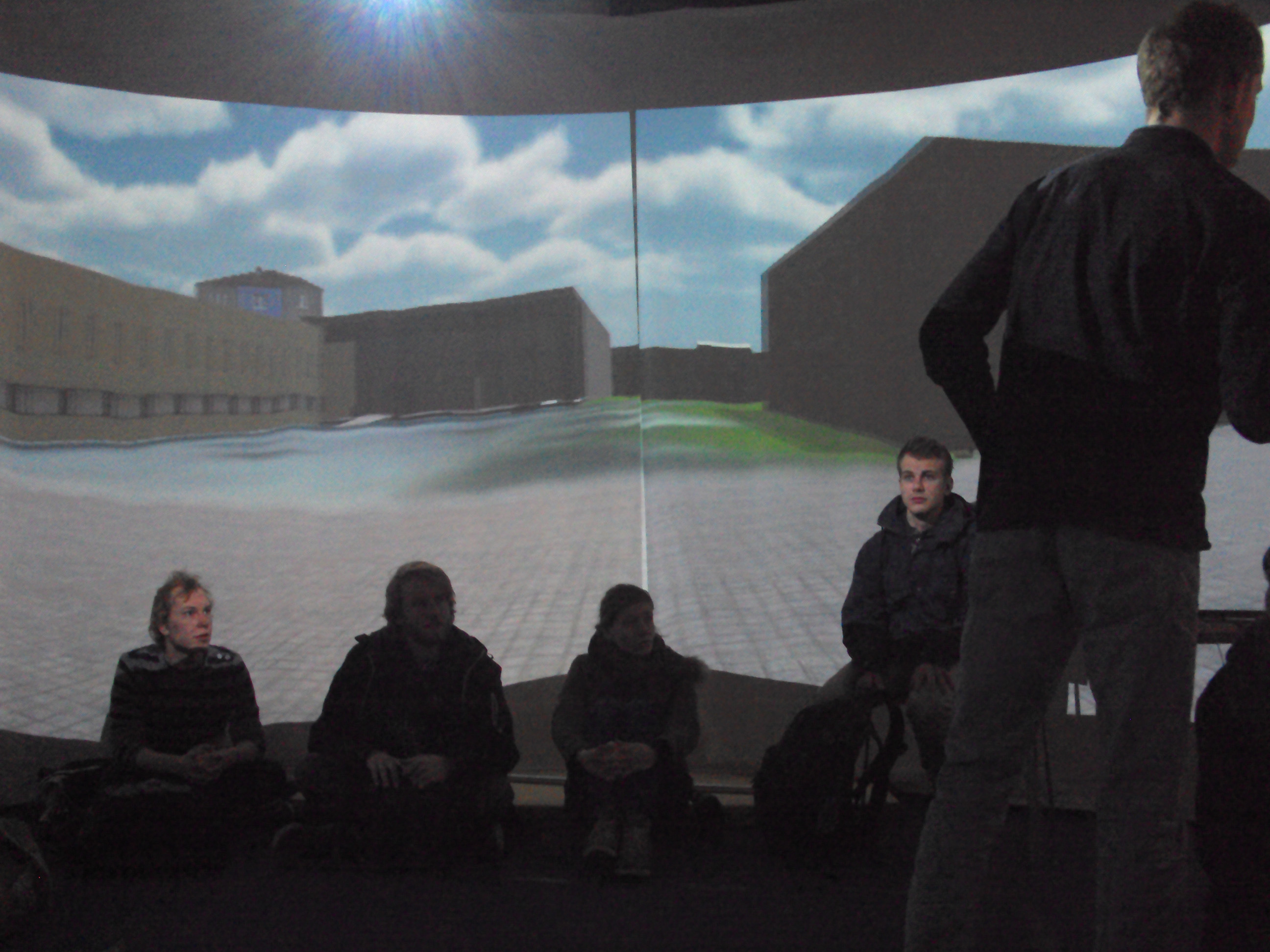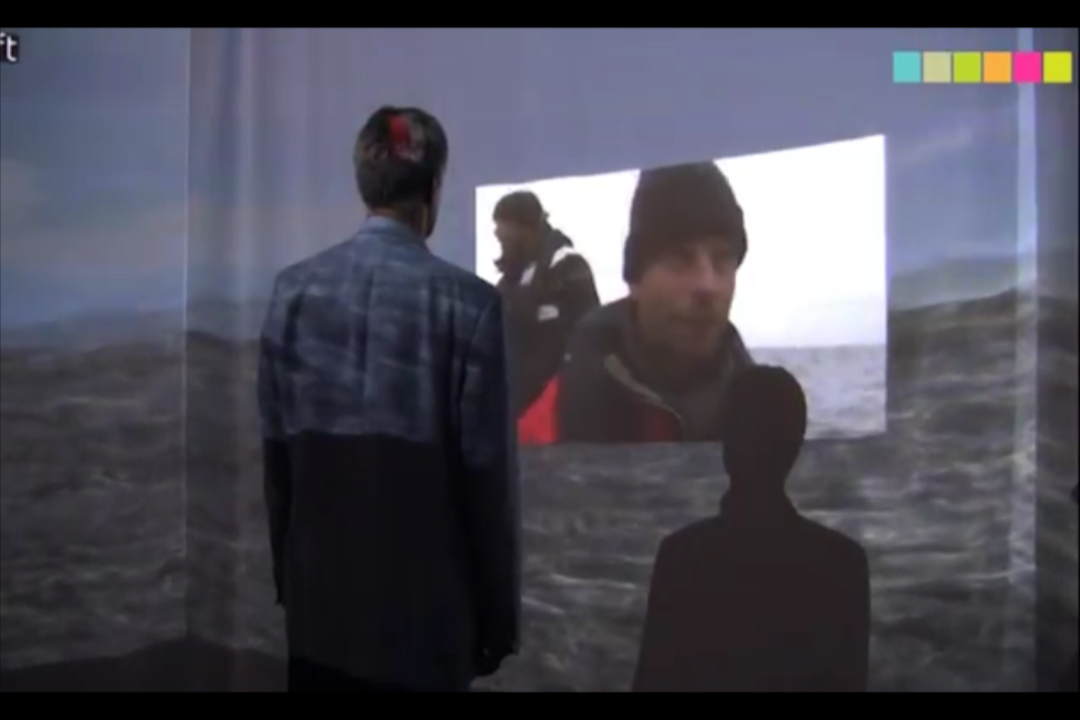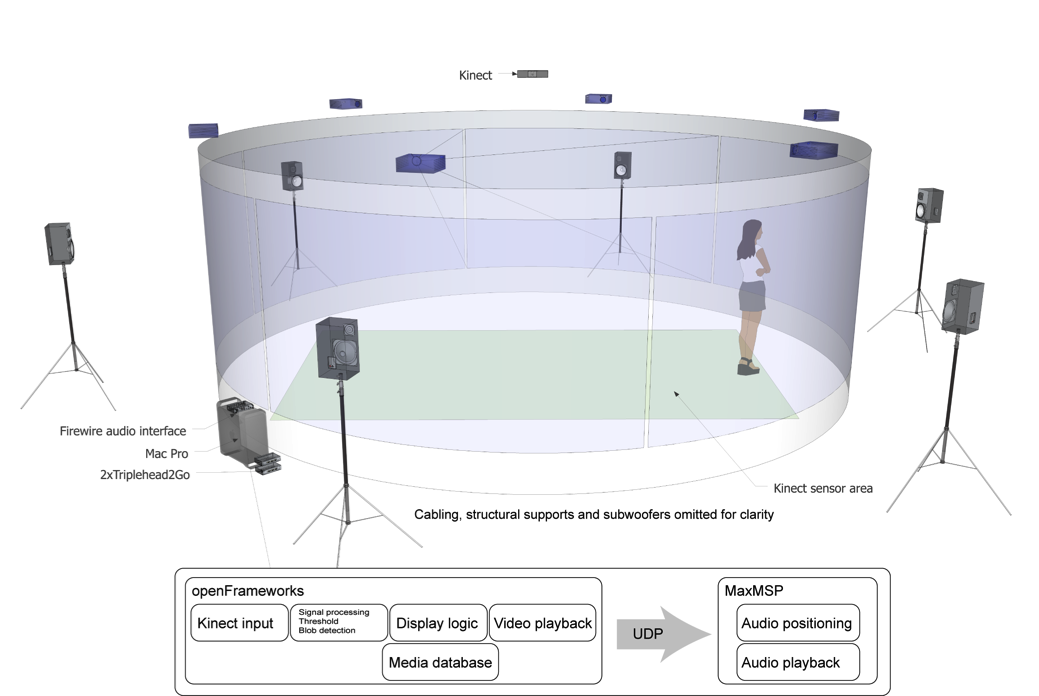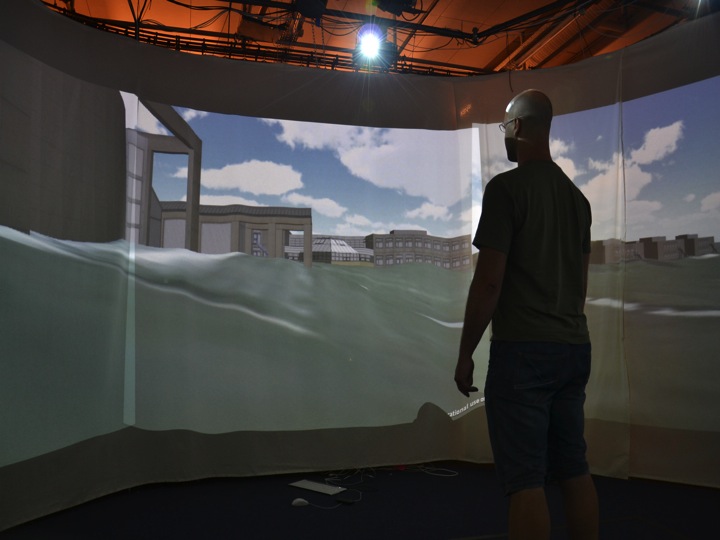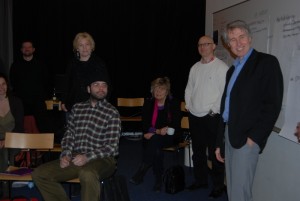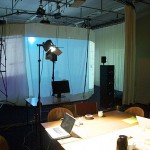(2012 – ongoing). Educational activities.
- Computer Science/Informatics Masters courseon ”Designing Interactive Experiences”
- Student projects(bachelor and masters) developing Experience cylinder applications, in games, scientific simulation, 3D worlds
- HumTekworkshops on creative sound, physical interaction
- Performance design workshops
- Computer science workshops
- 3D RUC student project. 3D RUC studenterprojekt
- Interactive 3D 360 degree student thesis. Interaktivt computerspil, studenterspeciale.
- Student thesis. Studenterspeciale, Datalogi
- Student thesis about gas molecules. Interaktiv visualisering af opvarmnings effekt på gasmolekyler. Studenterspeciale, Performance design.
(2015 – ongoing). Visualization and social network analysis.
Researching the aesthetics of interactive visualization on the basis of network graphs generated by the social network analysis method. En undersøgelse af interaktionsæstetiske aspekters sammenhæng med videndannelse på basis af immersive, interaktive visualiseringer af netværksgrafer der genereres ved hjælp af metoden social netværksanalyse.
(2014 – ongoing). Culture and City Spaces – a project in collaboration with Roskilde BiMus partners.
- Development of an interactive installation in Roskilde City center to communicate culture and cultural events. Interaktiv visualisering af kulturelle aktiviteter og tilbud i en centralt beliggende passage i Roskilde centrum og i byrummet.
- Culture and City Spaces is a part of the high profiled Roskilde BiMus project Kulturstrøget. Kulturportalen er en del af det højprofilerede udviklingsprojekt i Roskilde kommune: Kulturstrøget.
- Jensen, Sisse Siggaard (2015). Kulturportalen – kulturen i byrummet. Et summary baseret på erfaringer og observationer fra pilotprojektet. issuu.com/…/rapport_det_digitale_grupperum_fina
(2014-2016). The Digital Grouproom for project organized studies at Roskilde University – a pilot project.
- Building a prototype of the immersive, digital and interactive group room for project organized studies at Roskilde University. Prototype på et immersivt, digitalt og interactive læringsrum.
- Production of a video to visualize early ideas about a digital group room. Produktion af en video som led i at visualisere nogle af de tidlige ideer bag prototypes design.
- Workshops with students to discuss and critique the prototype. Workshops med respons og kommentarer fra studerende og videnskabeligt personale.
- Gürsimsek, Ates; Jensen, Sisse Siggaard; Thorlund, Steffen (2016). Interaktive grupperum: Kreativitet og kompleksitet i projektstudier. Rapport om erfaringer fra pilotprojektet Det digitale Grupperum. Roskilde, januar 2016. issuu.com/…/rapport_det_digitale_grupperum_fina
(2013-2015). Italian Drawings. A gigantic digital and interactive sketchbook.
- The gigantic, digital and interactive sketchbook has been exhibited at several Danish Art museums. Udstillet på Det italienske Institut, Roskilde Bibliotekerne, RUB, Øregaard Museum og Nivågårds Malerisamling, Ribe kunstmuseum.
(2014 – ongoing). Museum exhibition design (II) in collaboration with the Maritime Archeology Exploratorium, Viking Ship museum.
- Using ExCyl to communicate knowledge about maritime archeology. Formidling af marinarkæologi ved brug af oplevelsescylinderen.
- Building a copy of ExCyl in collaboration with the Viking Museum Maritime Archeology Exploratorium. Etablering af Cylinderen på Vikingsskibsmuseets marinearkæologiske eksperimentarium.
(2013-2014). Museum exhibition design (I) in collaboration with the Viking Ship museum.
- Using ExCyl to develop a new kind of museum exhibit. Oplevelsescylinderen som udstillingsområde.
- The Viking Museum decides to build a copy of ExCyl. Vikingeskibsmuseet beslutter at opføre en kopi af Experience Cylinder på museet.
(2012-2014). Experience Cylinder (ExCyl). Physical design.
- Further development of the generic digital architecture and the design of the physical platform. Konstruktion af en generisk digital og fysisk platform.
- Development and design of a 3D 360 degree immersive, collaborative and interactive computer game. Udvikling af 3D 360 graders immersivt, kollaborativt og interactive computerspil.
- Further development of ExCyl on the basis of experience from four projects. Videreudvikling af Experience Cylinder på basis af indhøstede erfaringer fra projekterne.
- The Sea Stallion. Havhingsten
- 3D installation of a RUC digital copy. 3D installation af RUC.
- The solar system. Solsystemet.
- The immersive, collaborative and interactive 3D 360 degree computer game. Immersivt, kollaborativt og interaktivt 3D 360 graders computerspil.
(2010-2014). Three EU research applications inspired by some of the ExLab experiments were submitted over the years 2010-2014.
- PERSONACH. The Personalized Virtual Guide: An Emotional, Embodied and Social ICT Concept for Creating New European Cultural Heritage MultiSensory User Experiences, 2010.
“The Sea Stallion from Glendalough, Experimental Archeology, and Adaptive Cultural Experiences. In 2007 The Sea Stallion from Glendalough sailed from Roskilde in Denmark to Dublin in Ireland where it presumably was built in the 11th century. This trip was the object of massive media coverage. The details of the trip along with stories of the volunteers’ sailing experiences were made publically available through the museum website, pod casts, Google Earth, and intense national and international media coverage. In Dublin the ship was docked in the central court of the National Museum of Ireland for exhibition over the winter, and then returned to Roskilde the summer after.
During the trip heterogeneous forms of data were gathered – wind, temperature, wave and tidal movements captured digitally with state of the art measurement technologies, systematic log book notes and personal accounts from the sailing crew were kept. Satellite data captured weather changes and boat route in detail. Vivid audio and video recordings show the everyday chores of rowing and eating, the sleeping arrangements and seasickness of the crew. Some of this data has been made available at the museum web-site, but most of it is still stored without detailed plans for its use and presentation.
How can this incredible journey to and from Dublin be retold and made available for a wider European audience? How can the relating of the narratives of this journey keep the Sea Stallion ‘alive’, draw in the public, and develop the future of the museum now when no more voyages are planned? How might new developments in engagement-driven technologies contribute creating personal visitor experiences of the Sea Stallion voyage? How might these technologies facilitate the museum visitor’s interpretation and understanding of the Vikings and experimental archaeology? What factors are critical in creating interest, engagement and appropriate intellectual challenges for visitors, including young people, minorities and other groups that might fall outside of the regular visitor demographics? How can the complexity of data involved in both the archaological reconstruction of the sea stallion and its sailing trip (a process rather than an object) be represented digitally as part of a museum setting and site? How can the role of visual and non-visual (hearing, smell, taste, touch) senses be incorporated digitally into the public display to stimulate user engagement? How can emerging social web technologies, important to the public following of the sea stallion trip, be integrated in the set-up of the new exhibition? Questions as these remain unanswered and have led to the project proposed.
Consortium.
- (Coordinator) Roskilde University RUC DK
- University of Warrick WARW UK
- University of Kent UniKent UK
- Trinity College Dublin TCD IE
- University of Cyprus UCY CY
- Foundation for Research and Technology Hellas FORTH GR
- The Viking Ship Museum in Roskilde VSM DK
- The Byzantine Museum of the Archbishop Makarios III Foundation MBP GR
- Cyprus University of Technology CUT CY
- National Museum of Ireland NMI IE
- English Heritage EH UK”
- RISE. Rich Intelligent Spaces for Exploration and Storytelling, 2011.
“Digital technologies for engaging virtual and physical worlds are emerging and maturing at a remarkable rate, bringing new challenges that transcend traditional concerns of IT system “functionality” and “user interfaces” This project addresses interdisciplinary questions concerning the complex relationships between narrative, user engagement, space and technology and aims to advance the state of the art in designing and facilitating coherent, interesting user experiences in virtual or hybrid spaces.
We develop and experiment with a concept enabled by the technological innovations – a new kind of interactive environment that we call Rich, Intelligent Spaces (RIS). “Rich” means that the environment incorporates a wide range of heterogeneous media and objects and allows multi-modal sensory experience and bodily interaction; “intelligent” means that the user’s experience is mediated by knowledge-based intelligent agents that create a fluid, structured yet personalised user experience. The concept of “space” includes physical places and installations, virtual worlds and seamless combinations of physical and virtual.
The project consortium includes researchers at Roskilde University in computer science and communication who have extensive existing collaboration including the recent establishment of the interdisciplinary Experience Lab, together with external partners from the areas of cultural heritage, digital entertainment, media production and advanced AV systems.
The aims of the project are 1) to advance the state of the art in developing and applying RIS for particular communication challenges in societal and private-sector applications and 2) to develop prototype RIS that will be tested and evaluated with external partners.”
- R-SPACES. Responsive Spaces for Visualization, Learning and Cultural Experiences, 2014.
“Responsive spaces can potentially be created just about anywhere – in the street, in classrooms, at home, in museums, hospitals, offices or in nature. They are spaces where people can interact with the world and with digital content in new ways, through body gesture and posture, through (co-) localization, or using light, natural communicative devices such as smartphones or tablets, for the purposes of learning, playing, visualizing, entertainment and communicating with each other.
Inter-disciplinary and international. Understanding how to create responsive spaces and explore their huge potential needs inter-disciplinary research; knowledge of the latest digital technologies and architecture must be combined with expertise in communication, narrative, multimodal interaction and space augmentation, and performance and aesthetics applied to responsive spaces. The international consortium includes beneficiaries and partners with research backgrounds covering all the relevant areas and knowledge of application areas in sectors including learning, health, games, music and theatre.
Innovative and inter-sectoral. The R-SPACES Innovative Training Network is about how to design, create and evaluate interactive, responsive spaces, especially in the areas of learning, visualization of information and cultural experience. These are areas where growth is rapid and the market is potentially huge. Many experiments and prototypes for interactive spaces exist but the field is young and developing and there is a need for advanced inter-disciplinary training to meet the coming market needs. Training needs include the choice, combination and effective use of the technology platform, design of multimodal interaction (visual, audio, tactile, contact) to meet the needs of the responsive space, evaluation of the experiences that users have in the space, and the business opportunities around innovative uses of responsive spaces.
Training via Connected Individual Projects. The core of the network activity will be 11 individual projects, which will be hosted by the project beneficiaries. The projects focus on different technical aspects of responsive spaces and address different application domains in education, health, cultural heritage and theatre. Workshops, courses and secondments will provide a cross-project training programme that exploits the many synergies and connections among the projects. The following project work packages will give structure to the topics and collaborations: WP1: Digital Architectures for Responsive Spaces, WP2: Design of Responsive Spaces, WP3: Evaluation of User Experience in Responsive Spaces, as well as WP4: Training Activities, and WP5: Management, Communication and Dissemination.
Consortium
- (coordinator) Roskilde University, Experience Lab, Dept. CBIT
- LIMSI-CNRS CNRS Dept Human/ Computer Communication
- University of Kent, School of Engineering and Digital Arts
- University of Warwick, International Digital Laboratory
- Cyprus University of Technology, School of Fine and Applied Arts
- Orbe ORBE, R&D section
- Experimentarium EXP, Forskningsenhed
- PARTNER ORGANISATIONS
- Stour Valley Arts SVA, R&D section
- goHDR, R&D section
- Roskilde Bibliotekerne, R&D section
- Region Sjælland RSJ, Health innovation unit
- Net ENG, R&D section
- Accademia di Belle Arti, R&D section
- Aalto University AALT, School of Art, Design & Architecture
- Elektronmusikstudion, R&D section”
(2010-2012). The Sea Stallion’s Voyage.
- A project developed in collaboration with the Viking Museum in Roskilde, Denmark. Havhingstens rejse – Et projekt i samarbejde med Vikingeskibsmuseet.
- Gallagher, John (2011). Havhingstens tur til Irland – en interaktiv oplevelsesplatform. Afsluttende Rapport, Roskilde Universitet 31. januar 2011. AfsluttendeRapport-1
- Andreasen, Troels; Gallagher, john; Møbius, Nikolai; Padfield, Nicolas (2011). Experience Cylinder, an immersive interactive platform – The Sea Stallion’s voyage: a case study. Roskilde University 2011.
(2011-2013). The Experience Cylinder (ExCyl). Development.
- Development of the generic digital architecture which is the basis for ExCyl. Udvikling af den generiske digitale arkitektur, som er grundlag for Experience Cylinderen.
(2010-2011). Experience Lab RUC opening seminar.
- Funded by the research project Virtual Worlds. Forskningsprojektet Virtuelle Verdener
- and the Dept. of Communication, Business, and Information Technologies. Institut for Kommunikation, Business og Informationsteknologier.

